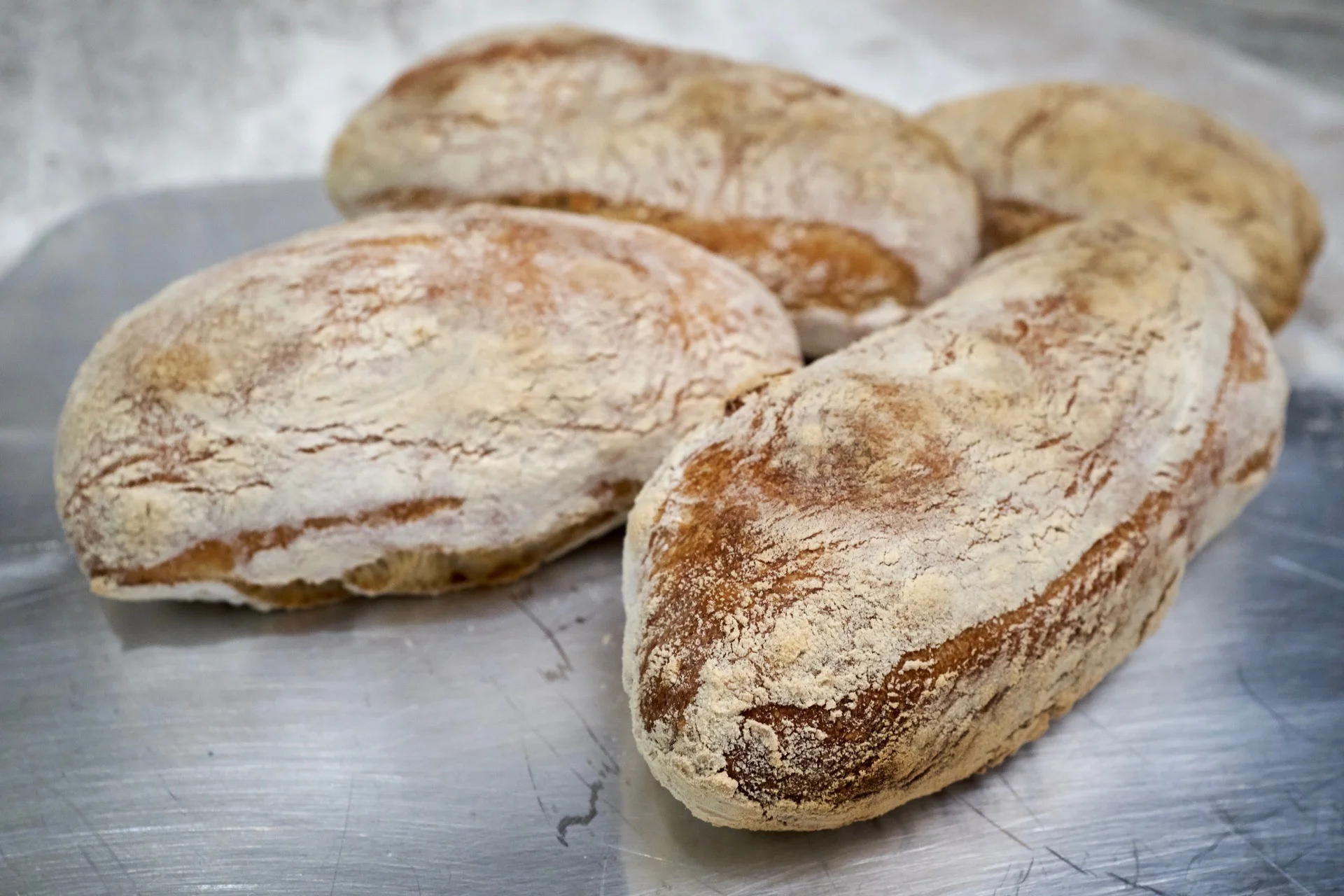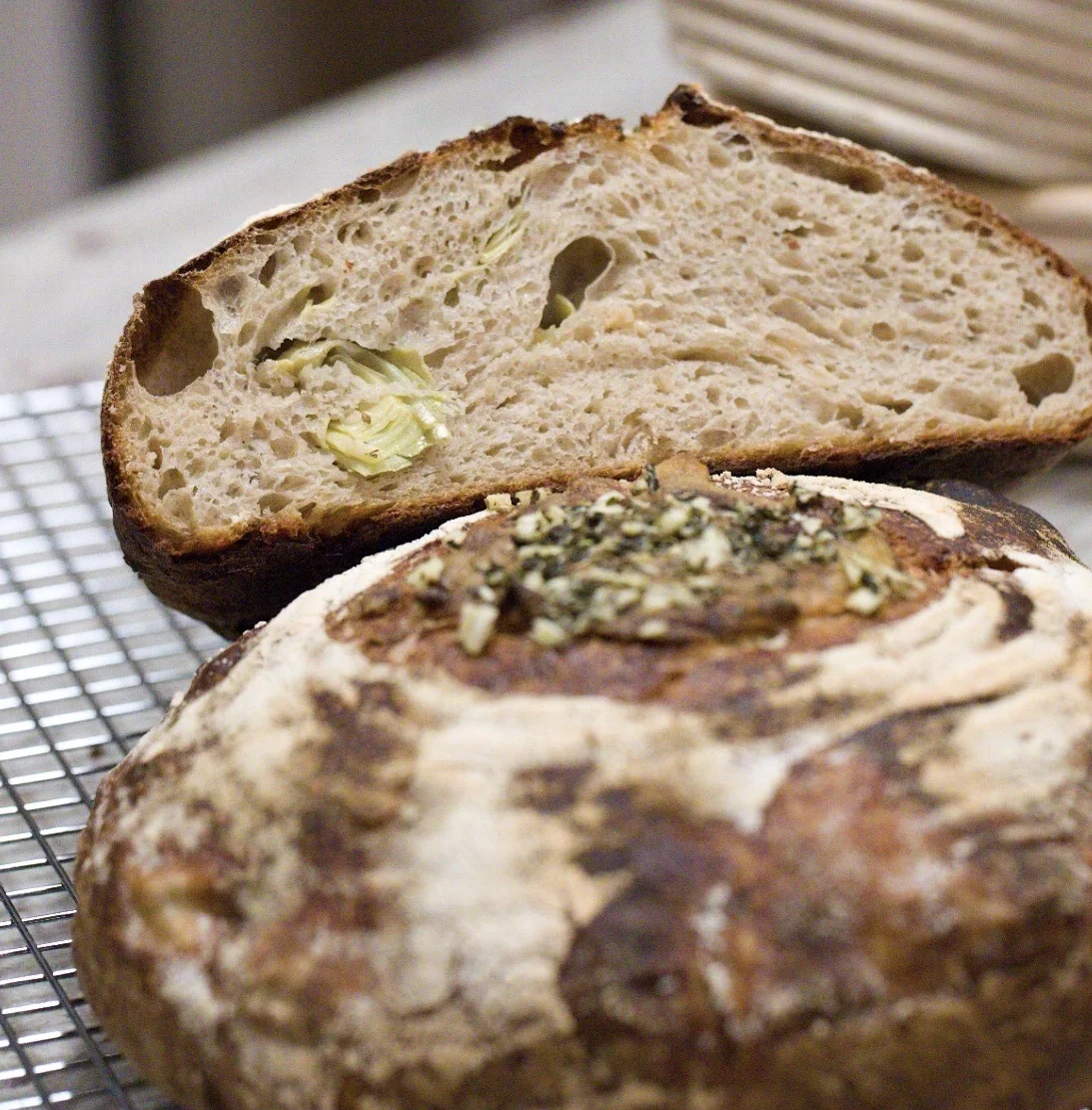Danish Rye Bread revisited
I really like my other recipe for the rye bread, I think It is close to perfect to my taste. But I needed to make the process easier. I love using a scale for baking, but just adding the flour in deciliters makes it so much easier, when baking 2 breads at the time.
Makes 2 big loafs
Ingredients:
Sourdough Leaven: (You are not using it all in the recipe, you need to save some for next bake)
200 g sourdough/starter (the starter you keep in the refrigerator and feed every other week)
400 g water
2 dl (110 g) rye flour
2 dl (120 g) all-purpose flour
Berries and seeds:
2 dl (135 g) flaxseeds
2 dl (135 g) sunflower seeds
2 dl (140 g) cracked rye
2 dl (180 g) rye berries
2 dl (160 g) bulgur (100% whole grain quick cooking bulgur wheat)
2 dl (190 g) wheat berries (hard red spring wheat berries)
Dough:
1500 g water (use this to soak the berries and seeds)
600 g sourdough leaven
3 tablespoons salt
1 splash food coloring (kulør) - optional
2 teaspoons malted barley flour
8 dl (440 g) rye flour (dark rye flour)
4 dl (240 g) all-purpose flour
Sprinkles:
sunflower seeds, pumpkin seeds, sesame seeds or poppy seeds.
Directions:
Day 1, morning:
Feed the starter to make the leaven. The leaven will be ready to use when the leaven is bubbling and smells like beer, after about 8 hours at room temperature. Cover the leaven with a clean towel.
Soak the berries and seeds in water in a large bow (I use to bowl because of the big amount). Cover the bowls with large plates. Let them soak at room temperature until the leaven is ready.
Day 1, night:
Add the leaven to the soaked berries and seed. Cover the bowls with large plates. Let the mixture ferment overnight at room temperature .
Save the leftover leaven and put it in the refrigerator in a sealed container. This will be your sourdough starter for the next batch of bread. It will keep without feeding for about 14 days in the refrigerator. *
Day 2, morning:
Add the salt, coloring and the flours to the dough and mix thoroughly, to make sure all the flour is fully incorporated, let rise for about two hours.
Add the dough to two rye bread baking forms. (I use Eva Professionel Rye Bread Tin which holds 3,3 liters).
Let the bread rise for about an hour, covered with a clean towel. The longer you let it rise, the more sour the bread becomes.
Poke a few holes with a cake tester or a knitting needle, to prevent the crust to rise and crack.
Brush the bread with water and sprinkle with your favorite seeds.
Place the baking form in a preheated oven for 1 hour 15 minutes at 350°F (175℃).
Turn off the heat, remove the breads from the baking forms, spray with water on all sides and place them back in the oven directly on the rack for about an hour, while the oven cools.
Take the breads out and wrap them in an clean kitchen towel. This will help softening the crust. Let breads cool completely.
Rye bread
It's best to wait cutting the bread until the next day.
Enjoy the bread with your favorite deli meat or cheese.
* Feeding: Discard half of the sourdough/starter and add ½ cup rye flour, ½ cup all-purpose flour and 1 cup water. Mix well, and let ferment for about 8 hours at room temperature.
The Danish version:
Rugbrød
Ingredienser:
Surdej:
200 g surdej/starter (Den surdej du har i køleskabet og fodre hver 14. dag)
400 g vand
2 dl (110 g) rugmel
2 dl (120 g) hvedemel
Korn og frø:
2 dl (135 g) hørfrø
2 dl (135 g) solsikkefrø
2 dl (140 g) knækkede rugkerner
2 dl (180 g) hele rugkerner
2 dl (160 g) bulgur (grov bulgur)
2 dl (190 g) hele hvedekorn
Dej:
1500 g vand
600 g nyfodret surdej
3 spsk salt
1 slat kulør - valgfrit
2 tsk maltmel
8 dl (440 g) rugmel
4 dl (240 g) hvedemel
Drys:
solsikkefrø, græskarkerner, sesamfrø eller birkes.
Directions:
Dag 1, morgen:
Fodr surdejen for at gøre den klar til bagningen. Lad surdejen stå tildækket på køkkenbordet i ca 8 timer, indtil den bobler lystigt og lugter af øl.
Udblød frø og kerner i vandet i et par store skåle ved stuetemperatur. Dæk skålene med store tallerkener. Lad kernerne stå indtil surdejen også er klar til brug.
Dag 1, aften:
Kom de 600 g surdej over i de udblødte kerner. Dæk skålene med store tallernener igen og lad blandingen fermentere/gære natten over ved stuetemperatur.
Gem resterne af surdejen i en lufttæt beholder. Dette er surdejen du skal fodre inden næste bagning. Surdejen kan holde sig i ca. 14 dage i køleskabet imellem fodringer.*
Dag 2, morgen:
Tilsæt salt og kulør til kernerne. Tilsæt melet, bland det godt sammen, indtil der ikke er mellommer i dejen. Lad dejen hæve i ca 2. timer på køkkenbordet.
Fordel dejen i 2 rugbrødsforme. (Jeg bruger Eva Professionel Rye Bread Tin).
Lad brødene hæve tildækket på køkkenbordet i endnu 1 time. Jo længere brødene hæver jo mere surt bliver brødet.
Prik små huller med en nål eller strikkepind, for at undgå at skorpen hæver og knækker under bagningen.
Pensl brødene med vand og drys med frø på toppen.
Bag brødene 1 time og 15 minuttewr ved 180℃.
Sluk for ovnen, og tag brødene ud af formene. Dryp vand på brødene og sæt dem tilbage i ovnen på eftervarmen i omkring 1 time.
Tag brødene ud og pak dem ind i et rent viskestykke, og lad dem køle helt af.
Brødene er letteste at skære dagen efter de er bagt.
Nyd brødet med dit yndlings pålæg.
Velbekomme!
* en fodring er: smid halvdelen af surdejen ud og tilsæt 1 dl hvedemel, 1 dl rugmel og 2 dl vand. Rør det sammen og lad det fermentere/gære på køkkenbordet i ca 8 timer.
This post has been submitted to the Yeast Spotting Site.
















